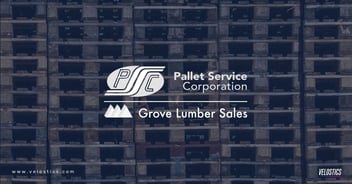Navigating High Inflation: Controlling Supply Chain Costs with Scheduling
Inflation can wreak havoc on supply chain costs, leading to increased expenses across the board. As prices rise for raw materials, transportation, and labor, companies are forced to find innovative solutions to mitigate the impact on their bottom line. One effective strategy for controlling supply chain costs during periods of high inflation is implementing robust dock and yard scheduling solutions.
Understanding the Impact of Inflation on Supply Chain Costs
Before delving into solutions, it's crucial to grasp how inflation affects supply chain costs. Inflation erodes the purchasing power of money, leading to higher prices for goods and services. This inflationary pressure extends throughout the supply chain, impacting various facets of operations:
- Raw Material Costs: Suppliers often increase prices to offset their rising expenses, passing the burden onto manufacturers. According to the Bureau of Labor Statistics, the Producer Price Index (PPI) for industrial goods rose by 8.6% year-over-year in the last quarter, indicating significant inflationary pressure on raw material costs.
- Transportation Expenses: Fuel costs surge during inflationary periods, driving up transportation expenses for shipping goods. The American Transportation Research Institute reported a 20% increase in the average cost per mile for trucking in the past year, primarily driven by rising fuel prices.
- Labor Costs: As wages increase to keep up with the rising cost of living, labor-intensive industries face higher payroll expenses. The National Employment Cost Index (ECI) showed a 4.5% increase in wages and salaries for private industry workers over the last year, outpacing the rate of inflation.
Given these challenges, businesses must proactively address supply chain inefficiencies to control costs and maintain profitability.
The Role of Dock and Yard Scheduling Solutions
Dock and yard scheduling solutions offer a comprehensive approach to optimizing supply chain operations, particularly during periods of high inflation. These solutions streamline the movement of goods within distribution centers, warehouses, and transportation hubs, ensuring efficient utilization of resources and minimizing costly delays. Here's how they help in cost control:
- Optimized Resource Allocation: By intelligently scheduling dock appointments and managing yard activities, companies can allocate resources more effectively, reducing idle time and maximizing productivity. According to a study by the Council of Supply Chain Management Professionals, optimized dock scheduling can decrease labor costs by up to 20% and improve asset utilization rates by 15%.
- Reduced Dwell Times: Excessive dwell times at docks and yards can inflate transportation costs and disrupt the flow of goods. Dock and yard scheduling solutions prioritize inbound and outbound activities, minimizing dwell times and expediting the turnaround of vehicles. This streamlined process lowers demurrage fees and increases asset utilization rates, contributing to significant cost savings. Research by the International Journal of Logistics Management suggests that a 10% reduction in dwell times can lead to a 5% decrease in transportation costs.
- Enhanced Visibility and Collaboration: Real-time visibility into dock and yard operations enables better coordination among stakeholders, including suppliers, carriers, and internal teams. With advanced scheduling tools and analytics, businesses can anticipate capacity constraints, mitigate bottlenecks, and optimize workflow efficiency. Improved collaboration fosters a more agile and responsive supply chain, capable of adapting to inflation-induced fluctuations in demand and costs. According to a survey by Gartner, 80% of companies reported improved collaboration and visibility across their supply chain after implementing dock and yard scheduling solutions.
- Data-Driven Decision-Making: Dock and yard scheduling solutions leverage data analytics to identify patterns, trends, and areas for improvement within the supply chain. By analyzing historical performance metrics and forecasting future demand, companies can make informed decisions to optimize resource allocation, reduce waste, and mitigate the impact of inflation on overall costs. A report by McKinsey & Company found that companies using data-driven supply chain management techniques achieved a 20% reduction in supply chain costs and a 50% increase in operating income.
Inflation presents formidable challenges for supply chain management, but with the right strategies in place, businesses can navigate these turbulent times and control costs effectively. Dock and yard scheduling solutions offer a proactive approach to optimizing supply chain operations, mitigating the impact of inflation on raw material costs, transportation expenses, and labor overheads.
By leveraging advanced technology, real-time visibility, and data-driven insights, companies can streamline their dock and yard operations, enhance collaboration across the supply chain, and maintain profitability even in the face of economic uncertainty. In today's volatile business environment, investing in robust scheduling solutions is not just a prudent choice but a strategic imperative for long-term success.
Ready to optimize your supply chain and navigate inflationary challenges?
Velostics offers a powerful Dock and Yard Scheduling Solution designed to streamline operations and minimize costs. Schedule a demo today and discover how Velostics can help you stay ahead in today's competitive landscape.


